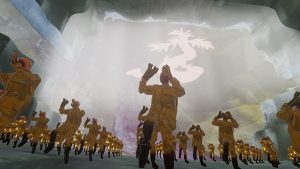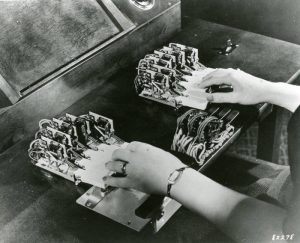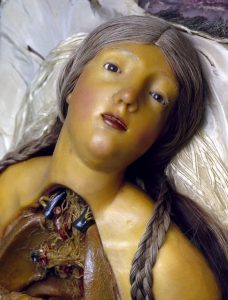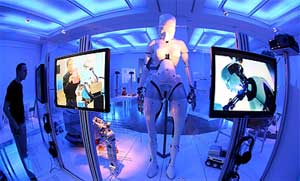 Yesterday i visited The Robots are Coming! People – Machines – Communication at the Museum for Communication in Berlin.
Yesterday i visited The Robots are Coming! People – Machines – Communication at the Museum for Communication in Berlin.
The exhibition traces the history of communication between humans and machines. All the types of robots you can think of are there: industrial robots, robots used in hospitals or for advertising purposes in the 1950s, made by artists, starring in music videos, toys, … New ones and ancestors: from 18th century musical automats, tea serving dolls from the Karakuri tradition, sketches by Bauhaus-related artists and designers to Tomy Omnibot, some of the robots that have grabbed the headlines over the past few years.
Three retro-future robots called Enter, Do Something and OK (my rough translation) are greeting visitors in the lobby of the museum. The first one, detects the legs of anyone approaching it and greets him or her, the second one talks like a little kid and spends its time following a big gym ball and i couldn’t understand what the third one was about (not able to grasp what the museum guards were trying to explain me.) Kind of fun but their cuteness is a bit too cliché.
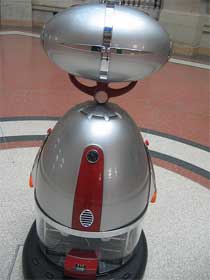
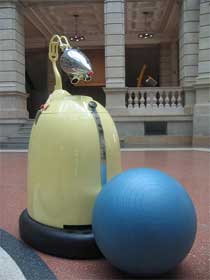
The biggest stars of the show, in no particular order:
– Sabor, a big robot (237 cm high, 270 kg) made in the 50s in Switzerland and inspired by Karel Capek‘s play R. U. R. (1920). It was able to smoke, move its arms and legs and speak with the help of an integrated phonograph to flirt with ladies.
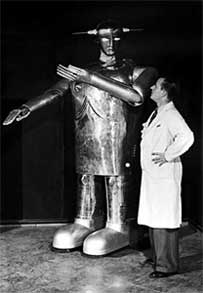
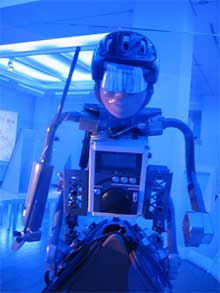 A previous version of Sabor in 1945 and robot jockey
A previous version of Sabor in 1945 and robot jockey
– the robot jockey KMEL, developed by Swiss company K-Team to replace its practice of using children as camel jockeys in the United Arab Emirates. The mechanical jockey gets orders from the instructor via a remote control system fixed on the back of the camel. The robots wear sunglasses, hats, racing silks, and they are sprayed with traditional perfumes used with human jockeys (via).
– the Novag Robot Adversary (1982) that plays chess with its mechanical arm, the first one available for sale to the public.
– a robotic arm that seems to be dancing, holding a piece of car in its hand. The robot is currently used to assemble Mercedes-Benz S-Class vehicles.
– climbing robots, crab robots, domestic humanoids, kinetic marionettes, and toys (loads of those).
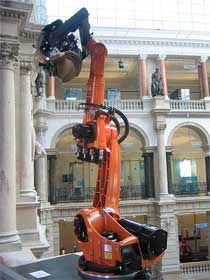
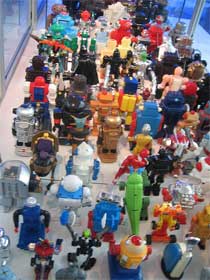 Assembly robot and Toys produced between 1972 and 1997
Assembly robot and Toys produced between 1972 and 1997
Robots from the art scene:
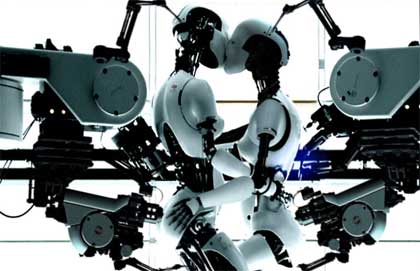 Screenshot from “All Is Full Of Love”
Screenshot from “All Is Full Of Love”
– an extremely beautiful android from the video that Chris Cunningham shot for Björk‘s All Is Full Of Love (1999.)
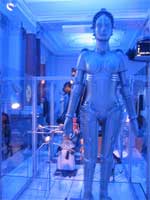
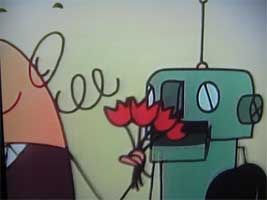
– Maria, the sexy and cruel fembot from Fritz Lang’s 1927 movie Metropolis.
– German artist Frank Fietzek was showing two works. The Self-running shoes he created together with Sven Ehamnn. Made for the exhibition “sneakers etc.” the pair of trainers could be remote-controlled by visitors. His second piece in the show is Watschendiskurs, a pair of robots that slap each other while arguing about language theory.
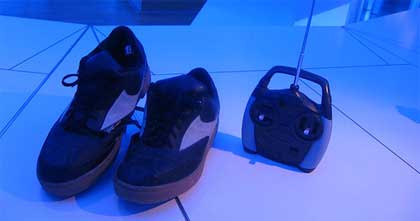
I’m not sure that bathing the exhibition in blue light is such a great idea. It gives a feeling of un-reality when the robots are indeed a reality. But the show was a very nice surprise. There isn’t much coverage of it in the press so i wasn’t expecting to discover such a fantastic collection. All explanations are in german which was a bit frustrating.
The exhibition runs until September 2 but there’s only a few days left to discover Les Robots-Music. Apparently the story starts during World War II when Edouard Diomgar, a French engineer imprisoned in a German camp, was killing time by fantasizing about an orchestra made of robots playing real instruments. After the war the 3 robots he built, Oskar, Ernest and Anatole, took the stage. They can play up to 500 tunes. The current version has been improved thanks to the latest tech developments but their clunkiness and bal musette songs are most charming.
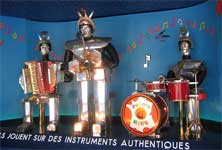
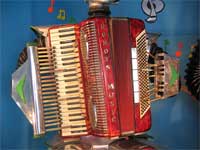
My images on flickr. Set of images of the robots in Der Spiegel. Image at the top from Galicia Hoxe.

